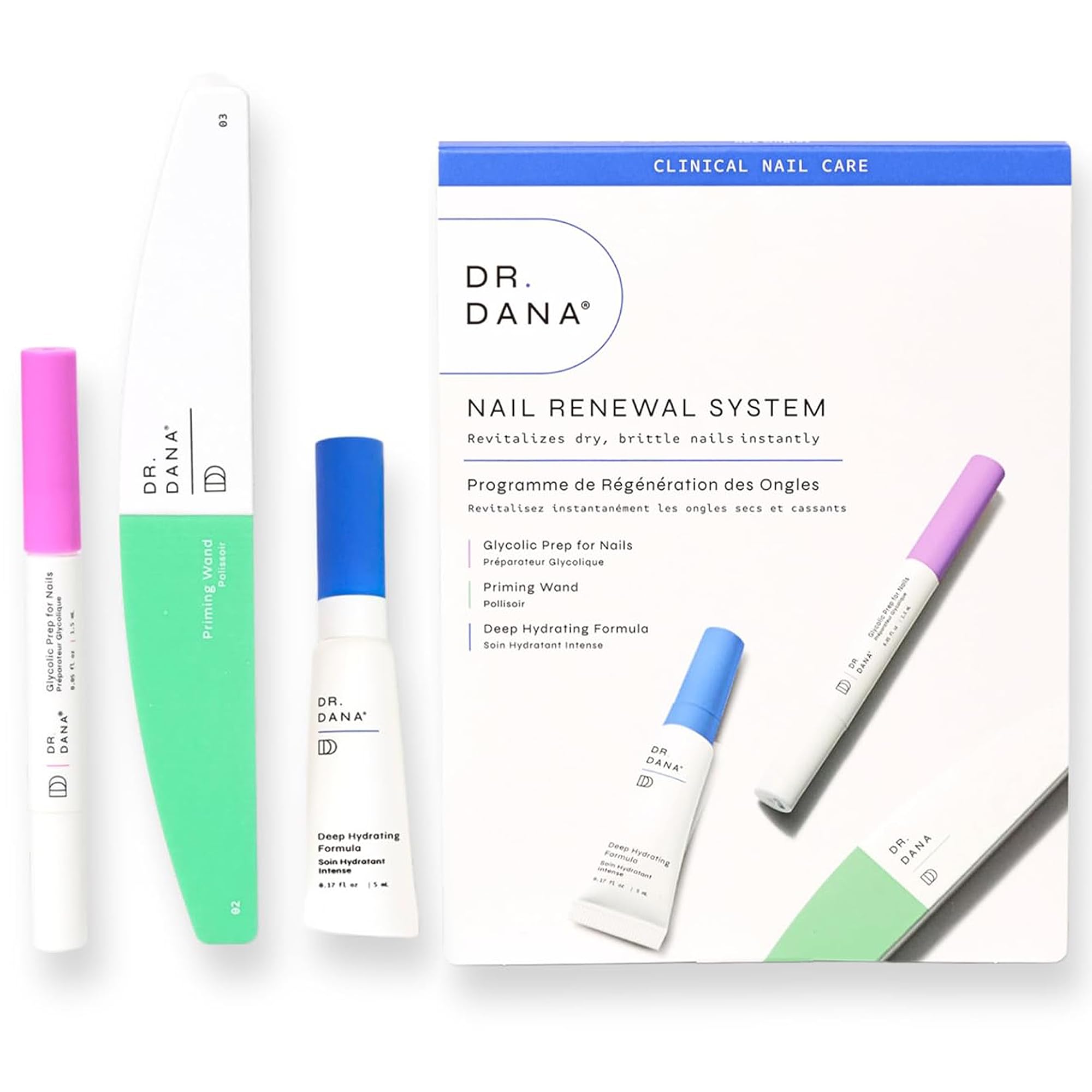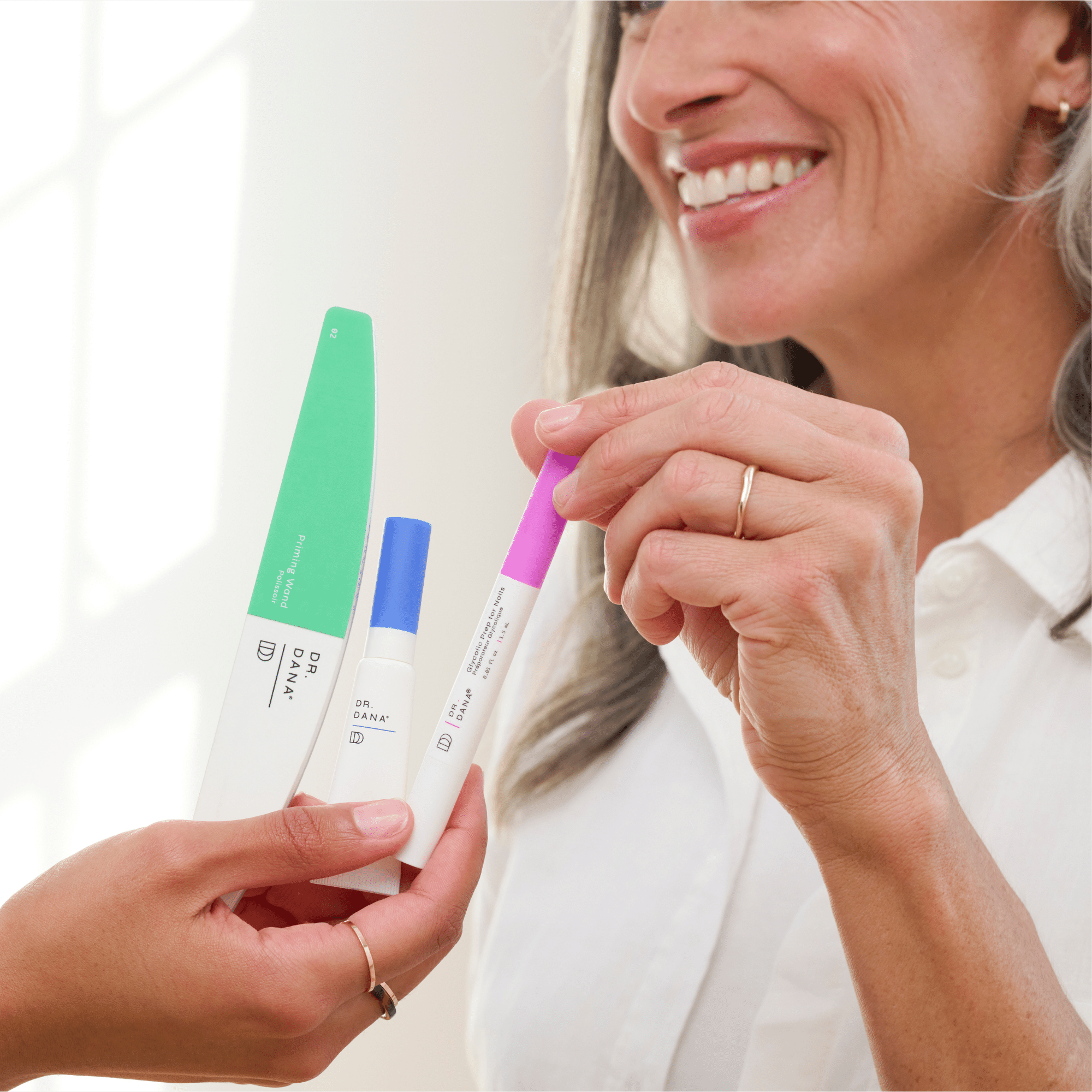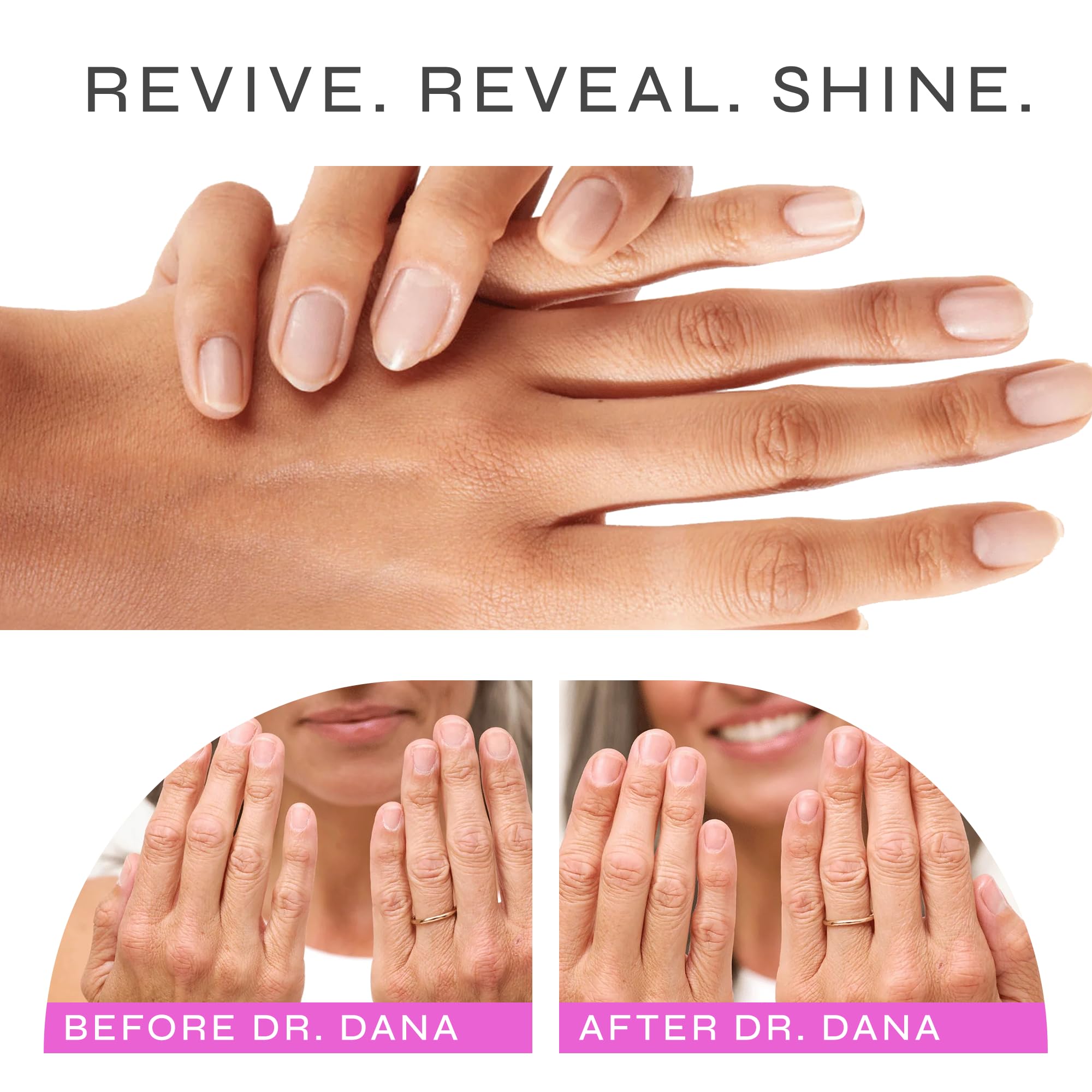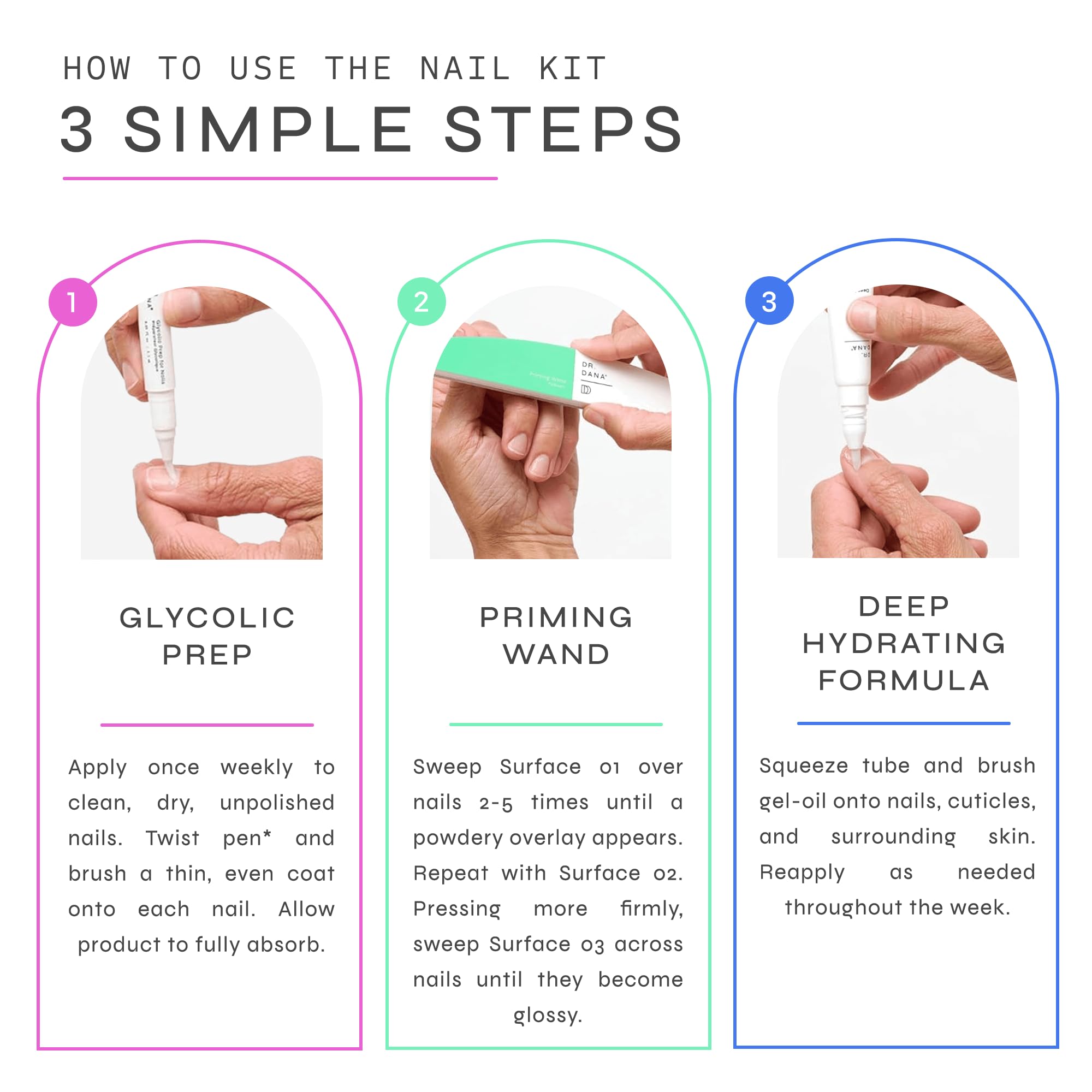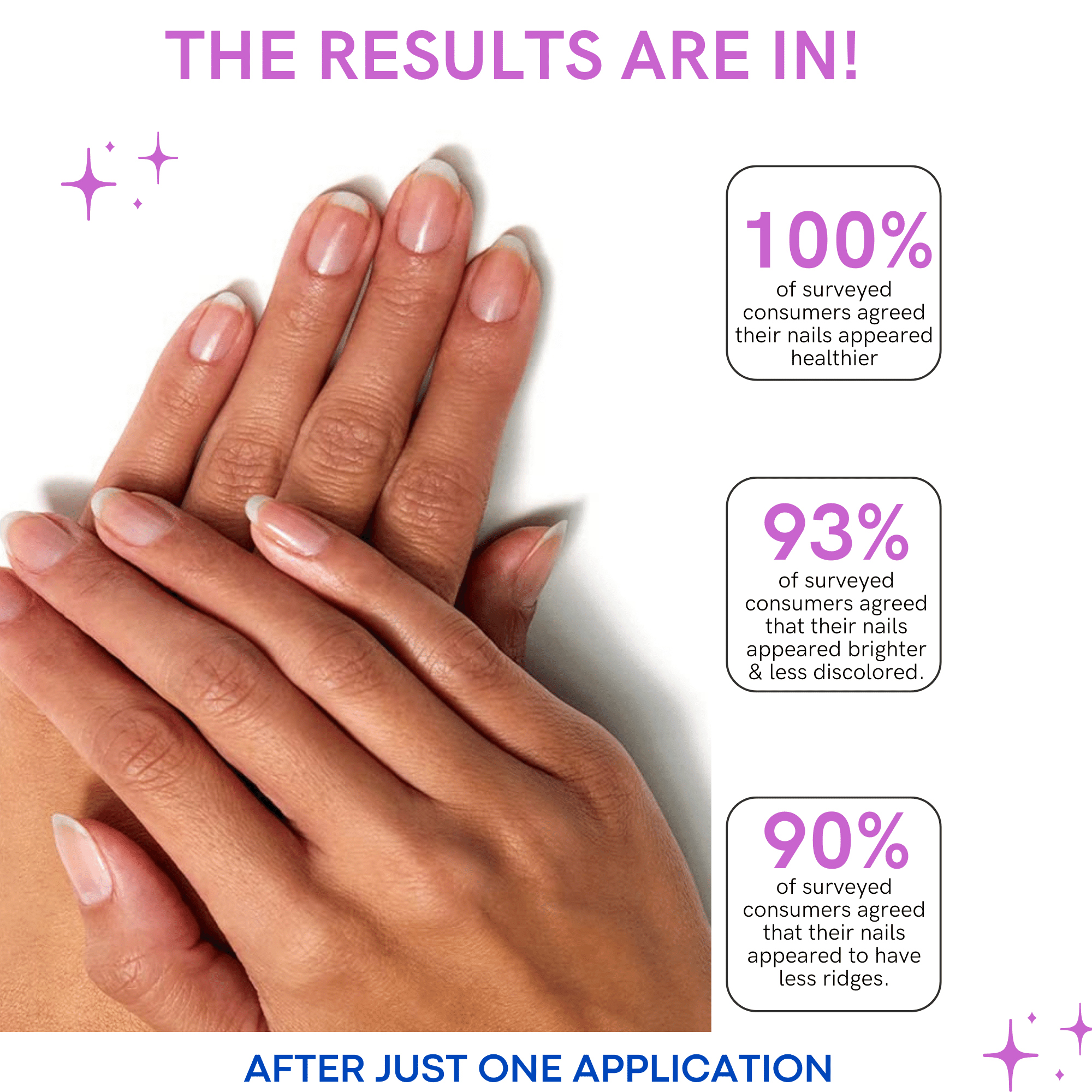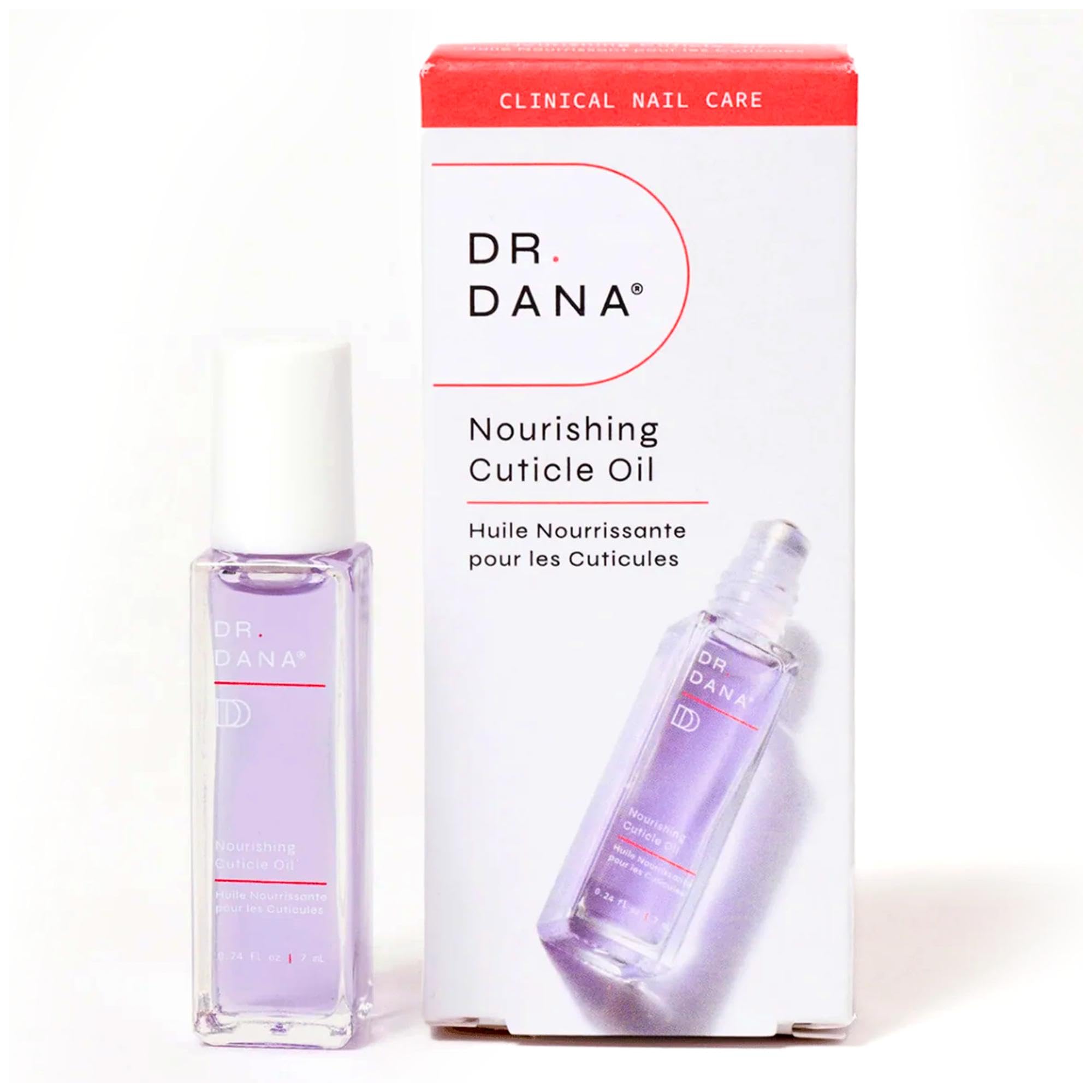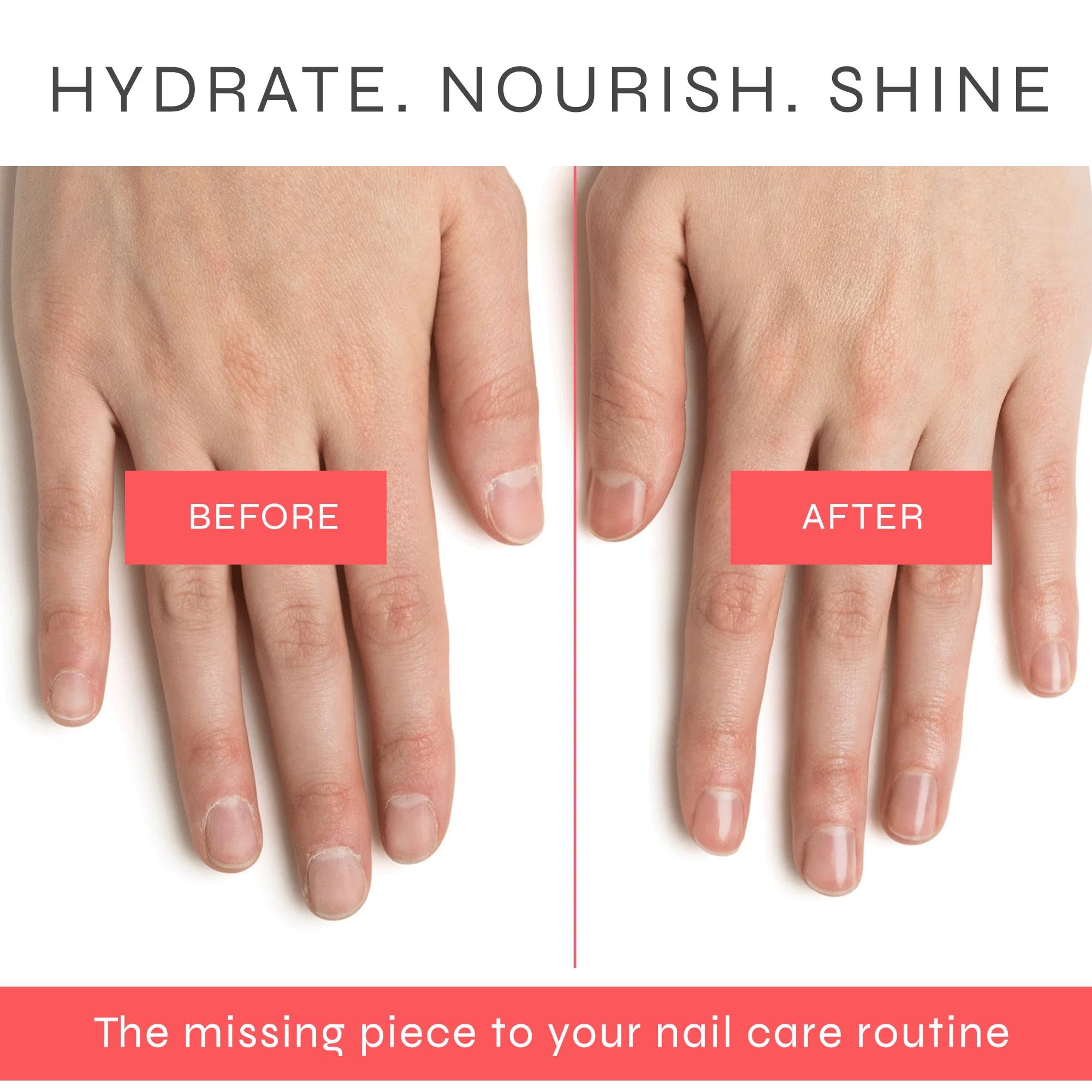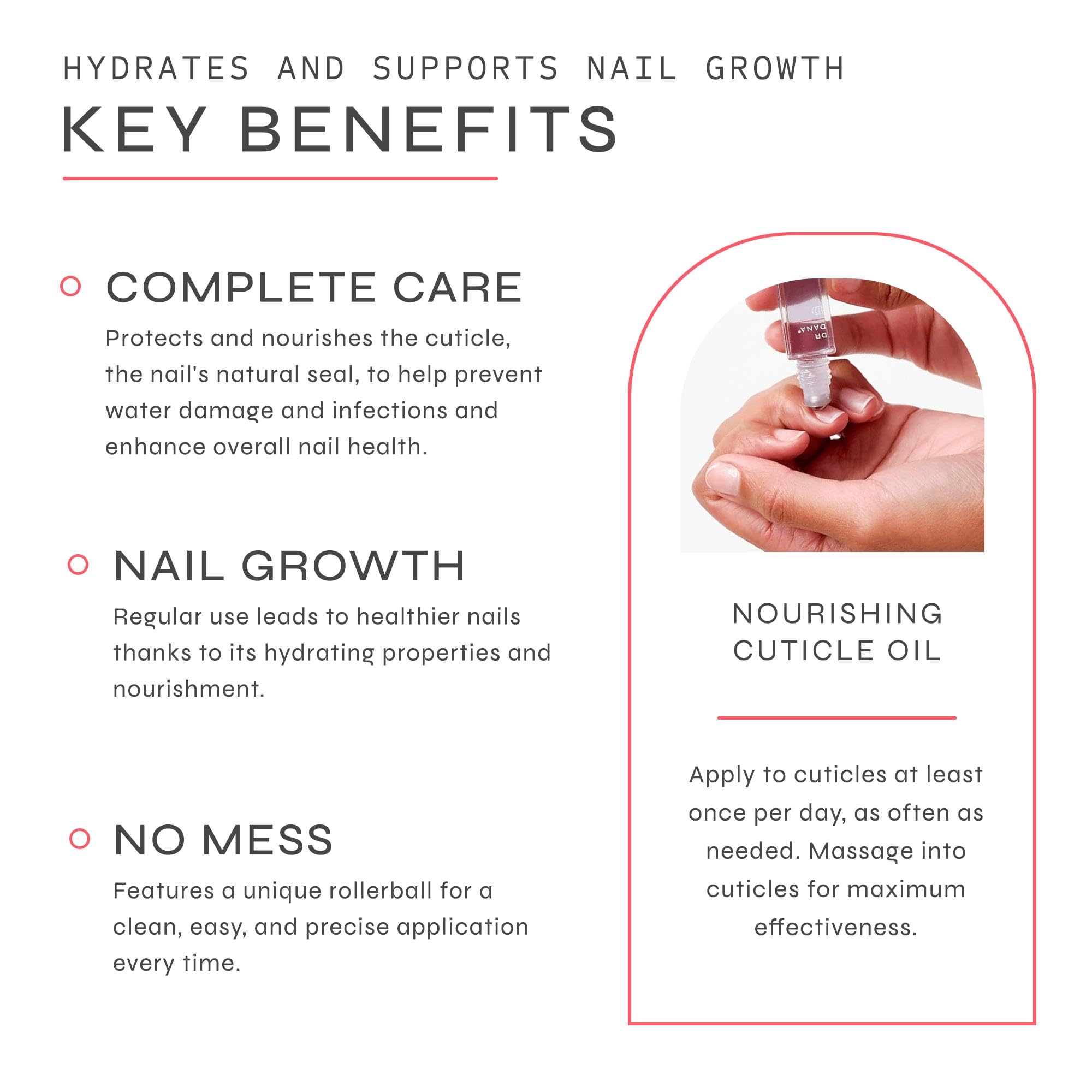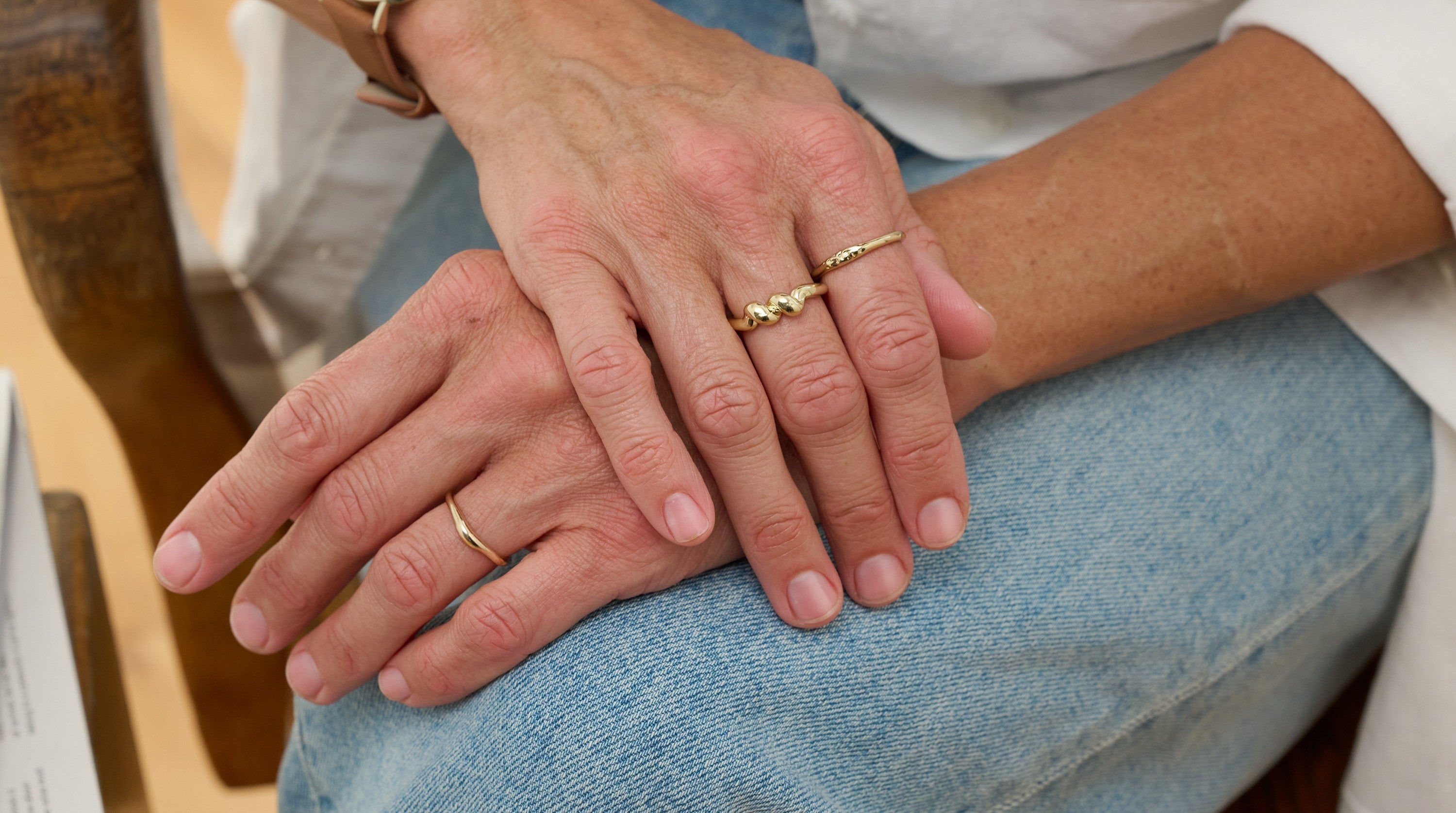Here at Dr. Dana, we believe that taking care of your nail health is just as important as that of your skin, hair, and the rest of your body. Strong, healthy nails are an indicator of a strong, healthy body. Plus, they look great. There are so many contributing factors when you talk about how to keep nails healthy—from which nail polish remover you choose to how you protect your nails while doing simple household chores like washing dishes.
Dr. Dana Stern has devoted her dermatological career to focusing on nail health—and that includes ways to protect nails and keep them from weakening or becoming brittle.
Let’s break down some of the most common questions when it comes to nail health so that you have a better understanding of how to get strong, healthy nails.
Is it true that if you want healthy nails you need to leave them polish free for the same amount of time as you wore the polish?
This is a random and arbitrary rule of thumb because everyone reacts differently to nail polish. There are many different polish brands and even the way polish is applied and removed can influence how the nails recover.
If your nails are tolerating prolonged use of nail polish, then go ahead and enjoy. But do note that a basic polish should typically be worn for about one week on the fingernails and two to four weeks on the toenails.
Weekly manicures do not necessarily cause damage to everyone’s nails. However, certain nail enhancements such as gel polish and acrylic removal can significantly thin the nail plate. This can cause brittle nails that are damaged and weaker than usual. That may indicate it’s time for you to take a polish holiday and work on your nail health. Using products that contain formaldehyde can also weaken nails because they cause the nail to harden and stiffen, preventing flexibility and often leading to separation and breakage.
What are the specific signs to look for to know if I need a nail polish holiday?
-
Brittle Nails
- Nail polish removers are solvents and tend to be very drying and dehydrating to the nail. The constant use of a remover’s harsh chemicals can lead to dry, brittle nails that are weak, peeling, and easily breakable.
-
Keratin granulations
- These white patches and surface changes to your nails occur often after wearing polish for a prolonged period. Think about that cranberry red from Christmas that you didn’t get around to properly removing until months later—and what the aftermath looked like. When the polish is removed, the superficial layers of nail cells are also stripped away, leaving uneven, white, rough patches. They will grow out and fade with time, but this can sometimes take weeks to months.
-
Nail yellowing
- The most common cause for nail yellowing is from polish itself. This happens because the porosity of the nail is variable. Certain people have more porous nails and are just more prone to pigment migration and thus, yellowing.
- Nail polish remover also dissolves the polish and makes the pigments migrate and leach. Therefore, you may see more yellowing with the no-chip/gel manicures which require 10 min soaks in acetone for removal.
- Not all nail polish dyes are alike. The darker the color, the more pigment, which can lead to increased yellowing. While yellowing is an issue with all brands, the issue is more shade dependent than brand dependent.
- If you don’t use a good quality base coat to shield the nail, you may experience yellowing.
How can I keep my nails healthy between polish applications?
In between polish applications, it is important to care, maintain and prevent nail damage just like we do with our skin. Essential exfoliation is an important part of this process because it removes superficial damage and dead nail cells at the surface. This means you can more effectively treat and moisturize the nail, bringing “the canvas” back to a healthier state. Think of it as a facial for the nail.
This is how the Dr. Dana Nail Renewal System works. Steps 1 and 2 are the exfoliation process, while Step 3 is the deep hydrating treatment.
What are the best ways to keep your nail beds healthy and prevent infections?
-
Cuticle care
- This is one of the most important ways to keep the entire nail healthy because the cuticle is the nail’s natural protective seal. A dry, dehydrated or non-existent cuticle will result in a compromised cuticle seal, potentially allowing water and yeast to enter the nail. This subsequently may cause an inflammation and infection of the skin surrounding the nail called paronychia.
- If the infection persists, it can eventually affect the appearance of the nail, causing white spots and depressions.
- A dry and compromised cuticle can also be a set up for bacterial infections. In this scenario, the nail becomes red, swollen, warm and painful and will often need to be drained and treated with an antibiotic by a physician.
-
Gloves
- When working with chemicals or water, wear gloves to protect the nails and cuticle and help keep your nails healthy.
- The nails are 1000 times more absorbent of water than the skin and that absorption puts a tremendous strain on nail cells leading to brittleness, weakness, and breakage.
-
Short nails
- Keeping nails shorter means the surface area is smaller and you can help prevent absorption of water and harsh chemicals.
-
Dry manicures
- This means no soaking in water, which puts a strain on the nail.
There are numerous polishes out there that are labeled 10-free, 5-free, etc. What are the top ingredients to avoid to protect nails when choosing a polish formula?
Here are Dr. Dana’s ingredients to avoid for healthy nails:
-
Formaldehyde
- This is used as a preservative in cosmetics and is a known carcinogen that is also linked to asthma, neurotoxicity, and developmental toxicity.
-
Phthalates (DBP, DEHP, DEP and others)
- This is a class of plasticizing chemicals used to make products more pliable. Phthalates disrupt the endocrine system and may cause birth defects.
-
Toluene
- This is a volatile petrochemical solvent that is toxic to the immune system and can cause birth defects.
-
Formaldehyde Resin
- This is used to helps polish adhere to the nails but is also an allergen and environmental toxin.
-
Camphor
- This is used as a plasticizer in nail polish. But if you inhale too much, it can lead to headaches, dizziness, nausea, and seizures.
-
Triphenyl Phosphate
- This is a plasticizer used to make polish flexible and durable, but it is also an endocrine disruptor and possible marine pollutant.
-
Xylene
- This is a solvent that keeps your nail polish from getting gloppy; it’s also a known allergen and possible carcinogen. It is a known human nervous system and respiratory toxicant, irritating to skin, eyes and lungs.
-
Ethyl Tosylamide
- This is a film forming plasticizer. In Europe, ET is considered to be a sulfonamide and based on the prohibition of sulfonamides in cosmetics, it may not be used in cosmetics and personal care products marketed in Europe.
-
Parabens (methyl-, isobutyl-, propyl- and others):
- This is a class of preservatives commonly used to prevent the growth of bacteria and mold. Parabens are endocrine—or hormone—disruptors, which may alter important hormone mechanisms in our bodies.
Does wearing a base coat help prevent nail damage?
Absolutely. Wearing a base coat is an important step for any manicure because it provides a base protective layer. It is also crucial for polish adhesion and therefore for the life of your manicure.
What other maintenance tips do you recommend to keep your nails healthy?
Do:
- Care for cuticles in between manicure appointments. Don’t forget to apply your favorite cuticle oil or cream throughout the day, especially in cold, dry months or when exposed to excess water, like going swimming in summer. Oil formulations are absorbed by the cuticle more effectively than creams are.
- Use a glass or crystal nail file instead of a cardboard emery board. Traditional cardboard emery boards create microscopic tears in the free edge of the nail that lead to splits and breakage. Glass creates a clean, free edge resulting in a smoother nail and polish that is less apt to chip.
Don’t:
- Use nail brushes. Dr. Dana often finds that when she has a patient with nail separation that does not respond to treatment, they are often using a nail brush. These devices can harbor yeast and bacteria and cannot be properly sterilized.
- Use nail products that contain harmful ingredients. Check out the above list for ones to watch out for, so you can maintain the healthiest nails possible. If you feel like you have a “miracle” nail strengthener, check the ingredients, chances are you will find formaldehyde or formalin.



